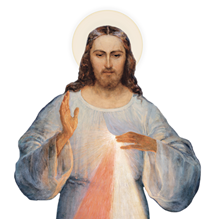
"The Death of St. Joseph," fresco in St. Joseph Church in Shelton, Connecticut (courtesy Fr. Michael Dogali)
By Dr. Joan M. Kelly
Devotion to St. Joseph is as old as the Catholic Church and has never been stronger, thanks in part to the recently concluded year-long celebration of the foster father of Jesus. But how much do we know for certain about the husband of the Virgin Mary, patron of the Universal Church?
Not as much as we’d like. Joseph never speaks in Scripture. Mark never mentions Joseph. John refers to Jesus twice as the son of Joseph, and that’s it. Our information about St. Joseph comes primarily from Matthew and Luke, the only two Gospels that tell the story of the Incarnation and aftermath.
But once Jesus is found in the Temple by His parents, Joseph disappears. We don’t know how old he was when he died a “happy death,” only that it occurred before our Lord’s Passion, as Mary is alone at the foot of the Cross. And he has no tomb. Several “relics” purported to be Joseph’s are venerated in Italy, including his wedding ring (Perugia), staff (Camaldoli), and cloak (Rome).
Old man? Hardly
For centuries, artists depicted Joseph as a wizened old man, even though the Church has never made a definitive statement about his age when he was betrothed to Mary. Suffice it to say, as Fr. Donald Calloway, MIC, expresses in Consecration to St. Joseph, that old men don’t walk 40 miles from Bethlehem to Egypt, pulling a donkey with Mary on top carrying a baby. Nor do old men walk 80 miles from Nazareth to Jerusalem and back again for the Roman census.
We can be certain that Joseph was a loyal husband and father, honorable and trustworthy. Despite his royal lineage (as recorded in St. Matthew’s Gospel), Joseph didn’t complain about his poverty. He had hardships, like all of us have. The flight into Egypt meant that he was a refugee, along with his wife and Son. He labored in his carpenter shop carefully, probably training his Son in the work. He went through the trials of parenthood, with a son being lost.
It is interesting and beautiful that, in Italy, Portugal, and Spain, March 19, the Solemnity of St. Joseph, is Father’s Day.
Why March 19? As early as the 10th century, the day was thought to be Joseph’s birthday. The custom stuck, and in 1570, Pope St. Pius V added the feast to the calendar in his apostolic constitution Quo primum (“From the first”), which standardized the Missal for the Latin Church.
Solemnity on March 19
As a solemnity (from the Latin sollemnitas, meaning a festival or celebration), March 19 offers a respite from the deprivations of Lent, a reminder of the noble role of St. Joseph in the upbringing of Jesus, in preparation to do His Father’s work.
Regarding work, in 1889, Pope Leo XIII wrote the encyclical Quamquam pluries (“Though many times”), in which he reaffirmed St. Joseph as the protector and defender of the Church as proclaimed by his predecessor, Pope Blessed Pius IX. Pope Leo consecrated the entire month of March to St. Joseph. At a time of labor unrest and in the face of the disruptive forces of modernity, the pope upheld the dignity of work as a vocation, and identified Joseph as the model for laborers at all levels:
For Joseph, of royal blood, united by marriage to the greatest and holiest of women, reputed the father of the Son of God, passed his life in labor, and won by the toil of the artisan the needful support of his family. It is, then, true that the condition of the lowly has nothing shameful in it, and the work of the laborer is not only not dishonoring, but can, if virtue be joined to it, be singularly ennobled. Joseph, content with his slight possessions, bore the trials consequent on a fortune so slender, with greatness of soul, in imitation of his Son, who having put on the form of a slave, being the Lord of life, subjected himself of his own free-will to the spoliation and loss of everything.
Similarly, Pope Ven. Pius XII, to counter the spread of Communism, also defended the dignity of work in 1955 when he established the Feast of St. Joseph the Worker on “May Day,” May 1.
Happy death
What about that “happy death” associated with St. Joseph? In 1920, Pope Benedict XV officially bestowed that title in his motu proprio Bonum sane (“Good and healthy”). Affirming the popular belief that Joseph had a “happy” death in the presence of Jesus and Mary — the desire of us all — the Holy Father called him the “most efficacious protector of the dying” and urged priests to promote “those pious associations instituted to supplicate Joseph in favor of the dying, such as those ‘of a Happy Death,’ of the ‘Transit of St. Joseph,’ and ‘for the Dying.’”
In proclaiming the recently-concluded Year of St. Joseph, Pope Francis continues the practice of his predecessors in encouraging devotion to the foster father of our Lord. He keeps a statue at his bedside of the sleeping St. Joseph, a reminder of how the angel communicated to Joseph in his dreams. Every night Pope Francis places his own intentions under the statue, praying that maybe he’ll be enlightened while sleeping or that prayers will be answered in the morning.
And so, in the words of St. André Bessette, the great champion of St. Joseph, “Ite ad Joseph!” Go to Joseph!
{shopmercy-ad}

















